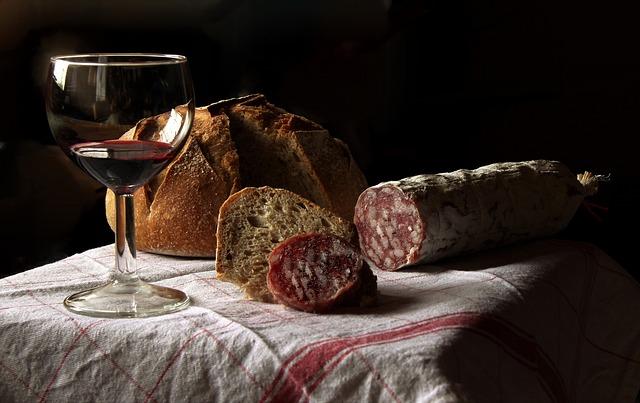Matching food with the right wine is more than just pairing white wine with fish. Knowing how the components of both food and wine compliment and contrast with one another can do wonders for enhancing a dining experience. This article will look into the structural elements and subtle intricacies that affect how wine and food are paired with each other.
How To Master Wine Pairing
The components that make up varieties of wine and food are complicated. Yet, when paired correctly can offer a beautiful harmony between the two. Mastering the principles of wine pairing takes practice. Some say that with wine pairing you can never go wrong, you can only continue to learn.
While this is true, by having a deeper understanding of how the structural elements and components of wine and food react with one another when dining can help you better decipher how to master wine pairing more efficiently.
Key Wine Pairing Principles
As wine tasters, we are aware that some individuals’ wine tasting skills will be more advanced than others and not everyone will be able to pick up on the nature of a wine in the same way. Similarly, wine pairing can be quite subjective. Individual and personal preference can often play a factor in how a dish is paired with a bottle of wine.
With that being said, there are key wine pairing principles that when understood and followed can help make your dining and tasting experience both harmonious and enjoyable.
Body With Body
Pay attention to textual components such as the body or weight of food and wine. You may have heard that “red wine should be paired with red meat” and “white wine should be matched with fish.” While this isn’t wrong, per se, the reason these are often associated with each other is due to their similar palate weights.
Generally, a full-bodied red wine will be paired with food that is richer, chewier and may have a higher oil content. However, that is not to say that all red wines should only be served with heavy meat dishes. For example, a medium-bodied Pinot Noir from Burgundy can be paired perfectly with that a medium-weight fish such as bass. Alternatively, a salty Assyrtiko from Greece can be decanted and served with a pork roast. Pairing dishes and wine based on body similarity is one of the core principles of wine pairing.
Place With Place
Often, if you are unsure about the correct pairing that you should go with, matching place with place can be helpful. Regional pairing can provide those who are still learning with a template. For example, a fruity, yet mineral driven Sancerre pairs extremely well with a Chavignol goat cheese from the region. Or a light and elegant Ribolla Gialla matches nicely with a Prosciutto di San Daniele.
However, is important to remember that this principle serves only as a general guideline and pairing simply by region is not always the answer.
Contrast Vs Compliment
Determining whether you want the components of a dish to be complimented or contrasted by a wine can impact wine pairing options. While complementing similar structural components of food and wine is considered a core principle by many in wine pairing, contrasting can be a pleasant surprise.
The mirroring or complimenting approach to wine pairing includes choosing a dish that mimics the overarching flavour qualities of a wine. For example, consider pairing a spicy and herby dish such as a rich beef stew with a spicy medium to full-bodied Syrah. Additionally, a lobster in a cream sauce would pair well with a California Chardonnay due to their similarity in richness and creaminess.
When using the contrasting approach in wine pairing, look to find a contrasting component that will help to balance out the flavour or textural qualities of a dish. Many choose to juxtapose the saltiness of a dish with a sweet wine. Matching elements that both have salty components can be too overpowering. Dishes with a high level of salt such as prosciutto can also influence the tannins and acidity of a similar profiled wine. Yet, contrasting a salty flavour with that of a sweet flavour helps to offset the effect of salt. For example, consider pairing an Alsatian Riesling with an Asian stir fry with soy sauce.
Alcohol And Tannins For Balance
Alcohol and tannin levels also play a role when mastering the principles of wine pairing. High-alcohol wines can often leave a hot aftertaste in the mouth. Pairing a high alcohol wine with that of a spicy dish can often reinforce the spicy flavour qualities in both. With spicy food, it is better to match with a low or moderate alcohol wine. Similarly, tannins can influence and transform flavours of a dish. Tannins bind with protein and allows the fat in meat to soften the astringency of the tannins. That is why high tannin wines, like Cabernet Sauvingon, are often served with a rib steak or roast.
Excellent Wine Deserves Excellent Food
Food and wine when paired together successfully can create a harmonious dining experience. By understanding the principles of wine pairing, a wine taster will be able to determine how best to compliment or contrast the subtle intricacies and flavour qualities that wine and food express. With practice and patience, you can master the principles of wine pairing.

